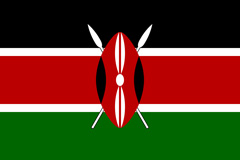FIT Policy Design in Kenya
 Kenya instituted a FIT policy in 2008 and revised the policy in 2010 and 2012 to accommodate more diverse energy sources and specific pricing for smaller project sizes (IEA 2014a; IEA 2014b).
Kenya instituted a FIT policy in 2008 and revised the policy in 2010 and 2012 to accommodate more diverse energy sources and specific pricing for smaller project sizes (IEA 2014a; IEA 2014b).
FIT policy designed and implemented in Kenya includes multiple types of renewable energy sources, which are assigned different payments. For example, a wind project with 0.5–100 MW of power plant capacity is assigned a tariff of USD 0.12/kWh, while a biomass-based energy source of similar capacity is assigned a lower tariff of USD 0.06–0.08/kWh (IEA 2014a).
Payments are also differentiated based on project size, reflected in 2012 policy revisions (IEA 2014b). Energy sourced from biomass at a capacity of 0.5–100 MW is assigned a tariff of USD 0.06–0.08/kWh (IEA 2014a), while smaller projects with a maximum capacity of 10 MW capacity are assigned a higher tariff of USD 0.1/kWh (IEA 2014b).
Kenyan FIT policy sets payments for 20 year periods and requires grid access guarantees from grid system operators, as well as priority purchase, transmission, and distribution (IEA 2014a). The Ministry of Energy has final authority to assess project feasibility (IEA 2014a).
